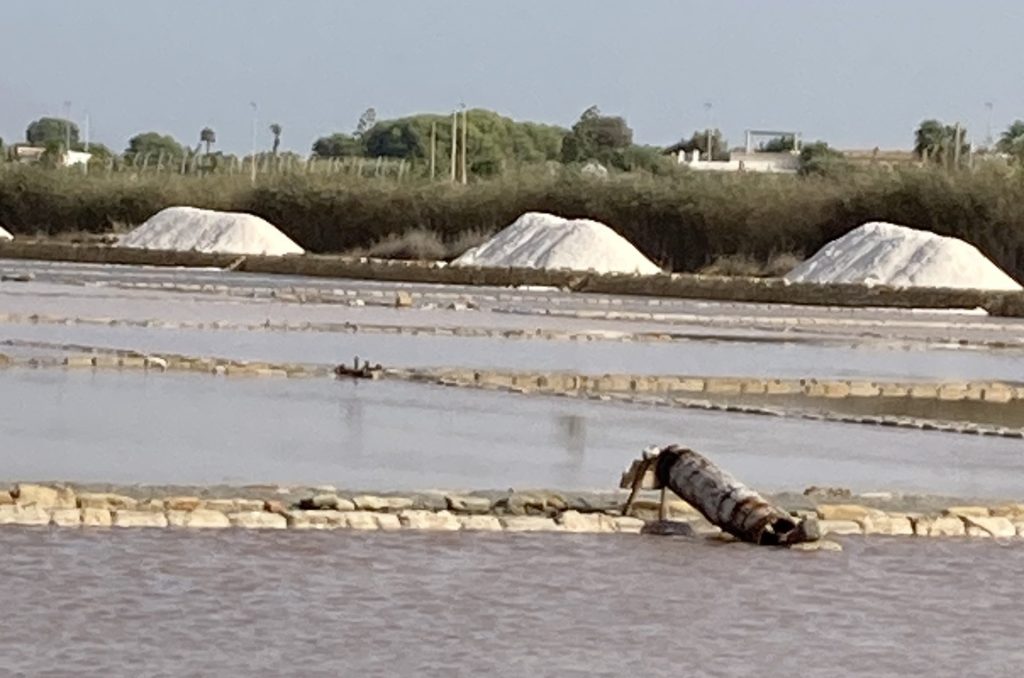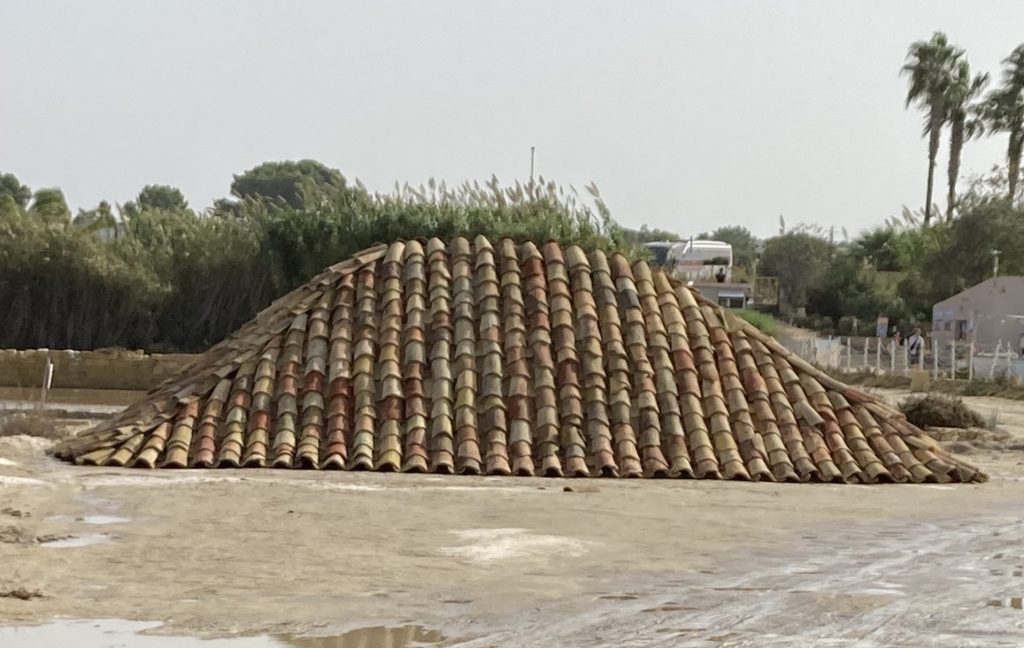In which we visit a salt flat
When I thought about going on a food tour of Italy, I thought of wine, and pasta, and seafood, and olives and olive oil. I did not think about salt. And once I knew we were visiting a salt flat, it did not occur to me that our visit to the Saline Culcasi salt flats outside Trapani and their related museum would be the most overtly historical stop we would make in Sicily.
The salt marshes south of Trapani are one of the oldest salt-making sites in the world, first established by the Phoenicians in 1500 BCE, and continued by the Romans, the Byzantines, the Muslims and the Spanish. Salt from Trapani was shipped to the Hanseatic League in Bergen, from which it was traded throughout medieval Europe.
When Italy was unified in 1861, Sicilian salt manufacturers found it hard to market their product. The new Italian government, like so many others before them, imposed a salt monopoly that favored producers on the mainland. Trapani salt, once an important export, became a local product, used to cure tuna, preserve capers, and cure olives.* The island economy was not enough to sustain all the salt works, and most of them had been abandoned before the Italian government ended the salt monopoly in 1973.
The Culcasi family took a gamble and restored a salt marsh that had been rendered unusable by mud and flooding in the 1960s. They now operate the flats using traditional methods.** Salt pans are divided by earthen dikes, which are punctuated by stone windmills. The windmills, which were introduced to the process in the eighth century, serve two purposes. They power Archimedes screws*** that move water from salt pans at different levels. They also use wind energy to grind dried salt crystals.
* Food tour!
**They also have a mechanical facility that produces commercial salt on a much larger scale.
***Invented in third century BCE, as you may recall, by a resident of Sircusa. This article from Scientific American gives an excellent description of how the Archimedes screw works: Lift Water with an Archimedes Screw






